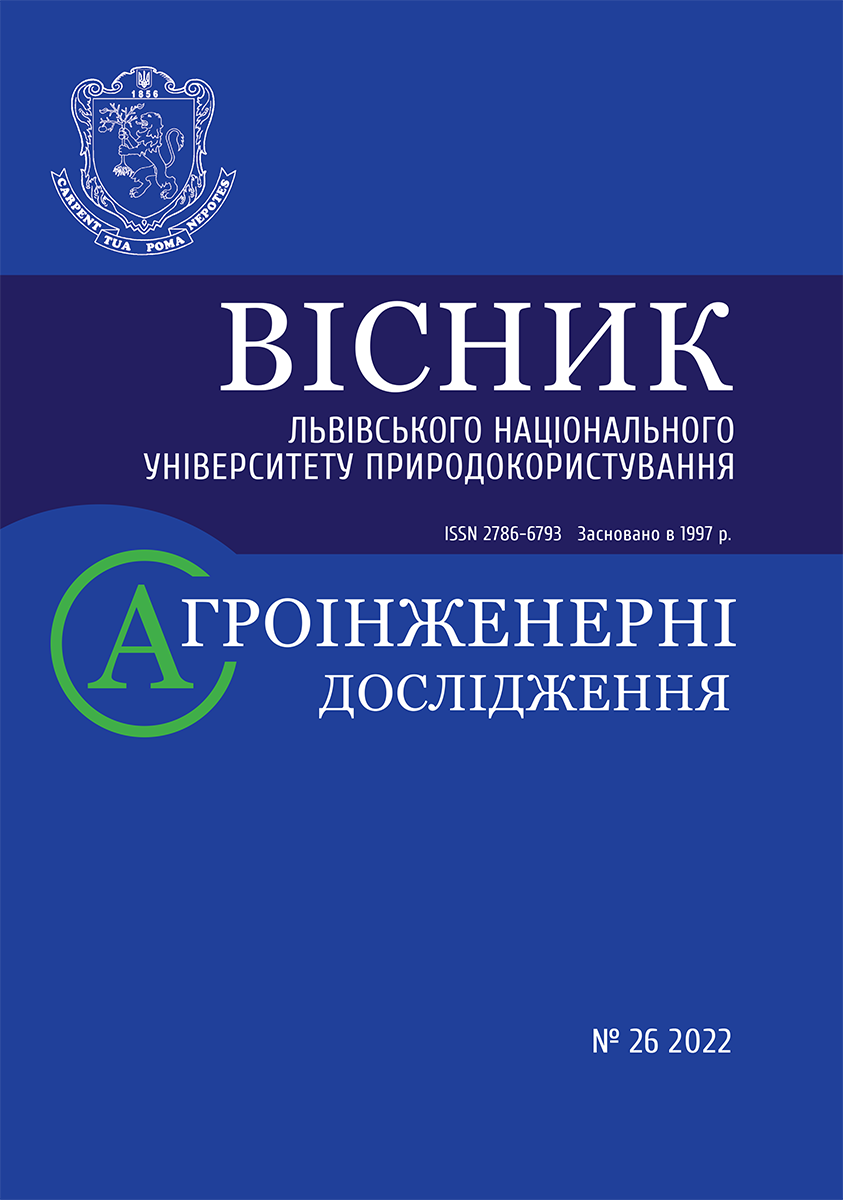Electrochemistry of macrocrack growth as an autonomous stage of the corrosion fatigue process in titanium alloys
DOI:
https://doi.org/10.31734/agroengineering2022.26.114Keywords:
titanium alloys, electrode potential, polarization, deformation, mechanism, electrochеmical kineticAbstract
The mechanism and kinetics of corrosion-fatigue fracture of titanium alloys are considered using the electrochemical investigations: the change of electrode potential E during specimens deformation (dependences E–lgN and E–DK), external polarization (dependences Еpol –DK). The electrochemical processes on the fresh surface (FS) for time t = 5×10-3s of their interaction with sodium chloride solutions of different concentration (0.1; 0.5; 1.0 and 1.5N solution) are studied. Basing on the correlation changes of the surface and the electrode potential, main stages of corrosion fatigue of titanium alloys of different structural and phase state have been indentified, It has been shown that FS of the alloys demonstrate all the properties of the material that can pass into the passive state. Activation of the alloy surface is accompanied by significant discharge of the electrode potential (–1,2 V) and a sharp increase of current (159 А/m2). The repassivation is characterized by a three-stage change of both the potential and the current. The variation of the curve «current–time» with deformation and without deformation is the same, however, under the deformations influence the current decreases more rapidly. Under plane strain conditions, the dependence of the stabilized electrode potential Еst on DK is of a rectilinear type. The solution concentration either increases or decreases the alloy structure. The increasing role of the electrochemical factor during corrosion fatigue is proved by the results of electrochemical protection effectiveness: during cathodic polarization the process of corrosion-fatigue crack propagation can be completely arrested. The kinetics and the mechanisms of corrosion-fatigue fracture of titanium alloys are analyzed.
References
Bard, A. G., & Stratmann, M. (Eds.). (2003). Encyclopedia of electrochemistry. Vol. 4: Corrosion and Oxide Fils. Weinheim (Germany): Wieley-VCH
Dmytrakh, I. M., & Panasiuk, V. V. (1999). Vplyv koroziynykh seredovyshch na lokalne ruinuvannia metaliv bilia kontsentratoriv napruzhen. Lviv: NAN Ukrayini, Fiz.-meh. in-t im. G. V. Karpenka.
Dmytrakh, I. M., Syrotiuk, A. M., & Leshchak, R. L. (2020). Ruinuvannia ta mitsnist trubnykh stalei u vodnevmisnykh seredovyshchakh. Lviv: Prostir-M.
Dmytrakh, I. M., Syrotiuk, A. M., Rusyn, B. P., Lysak, Yu. V., & Vainman, A. B. (2006). Stvorennia suchasnykh metodiv tekhnichnoi diahnostyky pratsezdatnosti system parovodianoho traktu enerhoblokiv TES. In Problemy resursu i bezpeky ekspluatatsii konstruktsii, sporud i mashyn: zb. Naukovykh statei (pp. 128-132). Kyiv: In-t electrozvariuvannia im. Patona.
Kalakhan, O. (2002). Elektrokhimiia koroziino-vtomnykh protsesiv tytanovykh splaviv. Visnyk Lvivskoho universytetu. Ser. khim., 42, 175-178.
Kalakhan, O. S. (2001). Zakonomirnosti elektrokhimichnykh vlastyvostei tytanovykh splaviv pid chas koroziinoi vtomy. Suchasni problemy mekhaniky materialiv: fizyko-khimichni aspekty ta diahnostyka vlastyvostei: Mizhnar. nauk.-tekhn. symp. (Lviv, 4–7 cherv. 2001 r.) Lviv: Nauk. t-vo im. Shevchenka, 2001, 94-95.
Kalakhan, O. S. (2021). Elektrokhimichni zakonomirnosti koroziino-mekhanichnoho ruinuvannia tytanovykh splaviv. Visnyk Lvivskoho nationalnoho ahrarnoho universytetu. Ahroinzhenerni doslidzhennia, 25, 113-119.
Kalakhan, O. S. (2003). Kinetic regularities of the electrochemical processes of corrosion fatigue in titanium alloys. Materials Science, 39 (5), 615-628.
Kalakhan, O. S. (2003). Kinetychni zakonomirnosti elektrokhimichnykh protsesiv koroziinoi vtomy tytanovykh splaviv. Fiz.-khim. Mekhanika materialiv, 5, 14-27.
Kalakhan, O. S., & Pokhmurskyi, V. I. Koroziia ta koroziino-vtomnyi rist trishchyny u tytanovomu psevdo– splavi u vodianoamiachnykh rozchynakh. Fiz.-khim. Mekhanika materialiv, 2001, 5, 31-44.
Kalakhan, O. S., & Pokhmurskii, V. I. (2001). Corrosion and Corrosion Crack Resistance of the PT3V Titanium Alloy in Aqueous Solutions of Ammonia. Materials Science, 37 (5), 718-734.
Nazarchuk, Z. T. (Ed.). (2017). Elektrokhimichni metody monitorynhu dehradatsii materialiv konstruktsii. In Tehnichna diahnostyka materialiv i konstruktsii: Dovidn. posib. (Vol. 6, р. 302). Lviv: Prostir-M.
Panasiuk, V. V. (Ed.) (2009). Mekhanika ruinuvannia ta mitsnist materialiv: dovid. posib. T. 11: Mitsnist i dovhovichnist naftohazovykh truboprovodiv i rezervuariv. Lviv: Spolom.
Pokhmurskyy, V. I., & Kalakhan, O. S. (2001). Vplyv poliaryzatsii na rist vtomnykh trishchyn u tytanovomu psevdo- splavi u luzhnomu seredovyshchi. Fiz.-khim. Mekhanika materialiv, Spets. vyp. 2, 51-55.
Pourbaix, M. (1966). Atlas of Electrochemical Equilibria in Aqueous Solution. New York: Pergamon Press.


